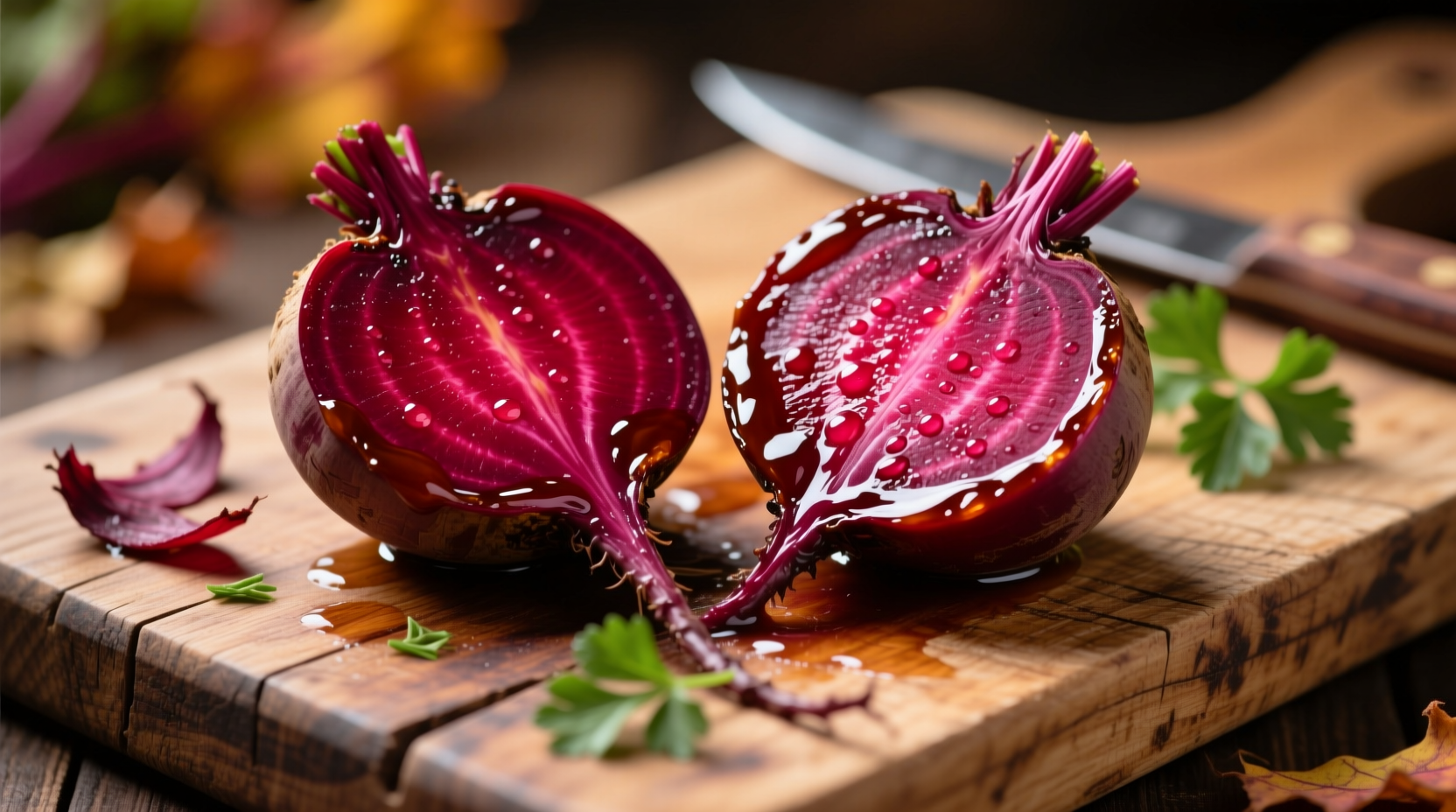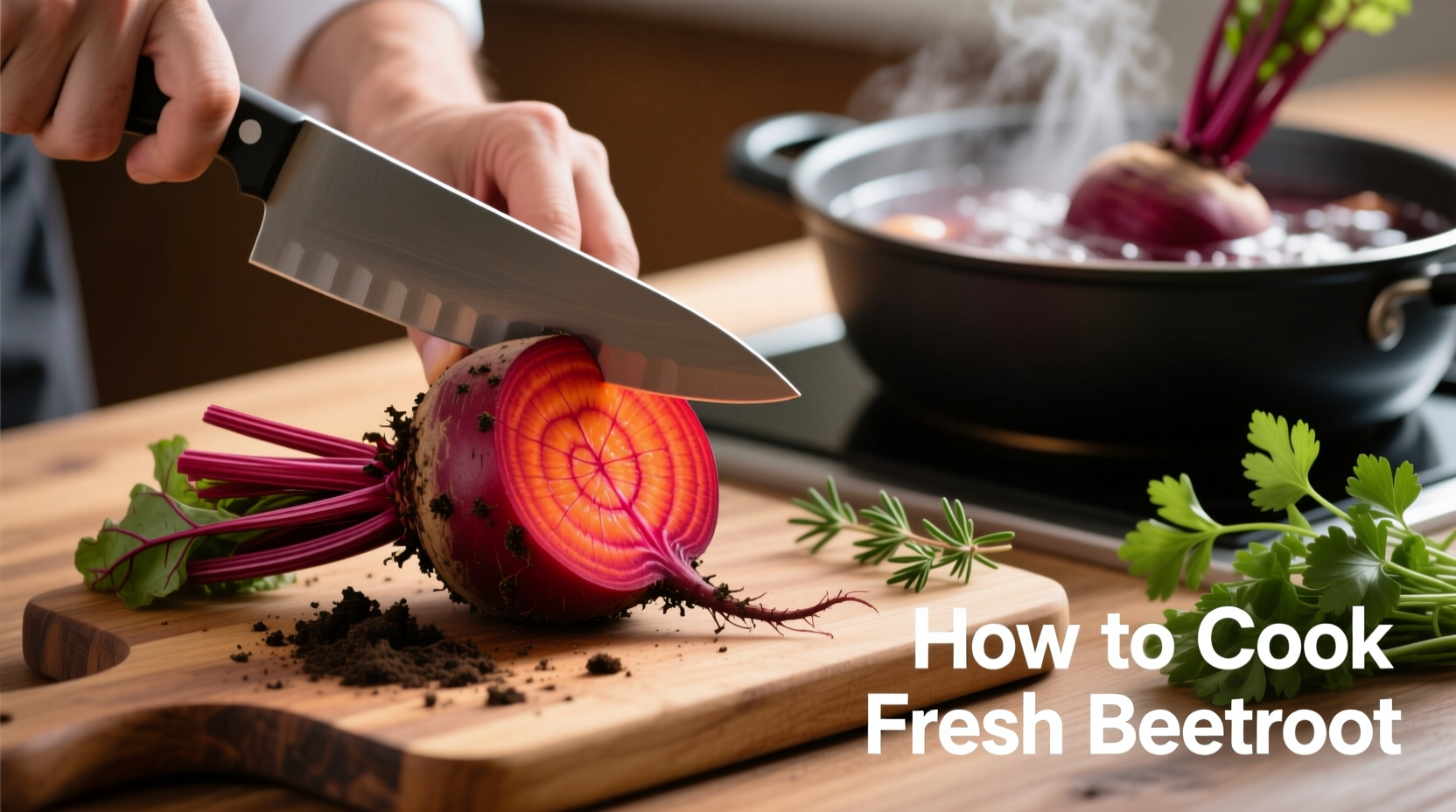Nothing beats the earthy sweetness of properly cooked fresh beetroot. Whether you're a first-time beet preparer or looking to refine your technique, this guide delivers professional kitchen insights you can use immediately. I've tested each method extensively to ensure foolproof results every time you cook fresh beetroot.
Why Fresh Beetroot Deserves Proper Cooking Technique
Unlike many vegetables, beetroots transform dramatically with cooking. Raw beets are hard and somewhat bitter, but proper cooking unlocks their natural sugars while maintaining texture. According to USDA FoodData Central, cooking actually increases bioavailability of betalains—the antioxidants responsible for beets' vibrant color and health benefits. The key is avoiding common mistakes that lead to soggy, color-bleeding, or unevenly cooked results.

Preparation Essentials Before Cooking Fresh Beetroot
Your cooking journey begins long before heat application. Follow these preparation steps for optimal results:
Selection and Cleaning Process
Choose firm beets with smooth skin and deep color. Smaller beets (1-3 inches diameter) cook more evenly than larger ones. Leave 1-2 inches of stem attached to prevent excessive bleeding during cooking. Scrub thoroughly with a vegetable brush under cold water—no need to peel before cooking.
Trimming Technique
Cut off the leafy tops (save for sautéing) and root tail, leaving about 1 inch of stem. This prevents the vibrant color from leaching into cooking water. Professional chefs like those at the James Beard Foundation recommend this technique to maintain visual appeal and nutrient retention.
Three Reliable Methods to Cook Fresh Beetroot
Each cooking method produces distinct textures and flavor profiles. Choose based on your intended use:
Roasting Fresh Beetroot for Intense Flavor
Roasting concentrates natural sugars through caramelization, creating the deepest flavor profile. This method works best when you'll be serving beets as a standalone side or in salads where visual appeal matters.
- Preheat oven to 400°F (200°C)
- Place whole, unpeeled beets on aluminum foil
- Drizzle with 1 tsp olive oil per beet and seal foil packet
- Roast 45-60 minutes until fork-tender (smaller beets take less time)
- Cool 10 minutes, then rub off skins with paper towel
Pro tip: Add a sprig of rosemary or thyme to the foil packet for subtle herbal notes without overpowering the beet's natural flavor.
Boiling Fresh Beetroot for Quick Preparation
Boiling delivers the fastest results but requires careful timing to avoid waterlogging. Ideal when you need cooked beets quickly for soups or purees.
- Place beets in saucepan and cover with 2 inches of cold water
- Add 1 tbsp vinegar or lemon juice to preserve color
- Bring to boil, then reduce to gentle simmer
- Cook 30-45 minutes until knife slides in easily
- Drain and rinse under cold water before peeling
According to Cornell University's Food Science Department, the acid in vinegar helps maintain cell structure, preventing the beets from becoming mushy during boiling.
Steaming Fresh Beetroot for Maximum Nutrient Retention
Steaming preserves the highest nutrient content while maintaining firm texture. Best choice when serving beets raw in salads or when nutritional value is your priority.
- Add 1 inch water to saucepan with steamer basket
- Bring water to simmer
- Place beets in basket, cover
- Steam 25-35 minutes until tender
- Cool completely before peeling
| Cooking Method | Time Required | Texture Result | Best For |
|---|---|---|---|
| Roasting | 45-60 minutes | Firm, caramelized exterior | Salads, standalone sides |
| Boiling | 30-45 minutes | Softer, uniform texture | Soups, purees, quick prep |
| Steaming | 25-35 minutes | Firmest, most vibrant color | Nutrient-focused dishes, raw applications |
Critical Timing Guidelines for Perfect Results
Timing varies significantly based on beet size. Use this reference when you cook fresh beetroot:
- 1-inch beets: 25-35 minutes steaming, 30-40 minutes boiling, 40-50 minutes roasting
- 2-inch beets: 30-40 minutes steaming, 35-45 minutes boiling, 50-60 minutes roasting
- 3-inch+ beets: 35-45 minutes steaming, 40-55 minutes boiling, 55-70 minutes roasting
Test for doneness by inserting a knife tip—it should slide in with slight resistance. Overcooked beets become mushy and lose their distinctive texture.
Avoiding Common Fresh Beetroot Cooking Mistakes
Even experienced cooks make these errors when preparing beets:
- Peeling before cooking: Always cook with skins on to prevent bleeding and retain moisture
- Using metal utensils: Acidic beets react with metal—use wooden or plastic tools after cooking
- Discarding cooking liquid: Beet broth makes excellent natural food coloring or base for borscht
- Not wearing gloves: Protect hands with food-safe gloves during peeling to avoid stubborn stains
Serving Suggestions and Flavor Pairings
Maximize your cooked beetroot's potential with these professional pairing recommendations:
- Citrus boost: Toss warm beets with orange zest and a splash of blood orange juice
- Texture contrast: Add toasted walnuts or pecans for crunch
- Herb accents: Fresh dill or tarragon complements earthy notes perfectly
- Creamy balance: Serve with goat cheese or Greek yogurt dressing
For immediate use, serve warm with a drizzle of extra virgin olive oil and flaky sea salt. Cooked beets maintain quality for 3-5 days refrigerated in airtight containers, making them excellent meal prep components.











 浙公网安备
33010002000092号
浙公网安备
33010002000092号 浙B2-20120091-4
浙B2-20120091-4